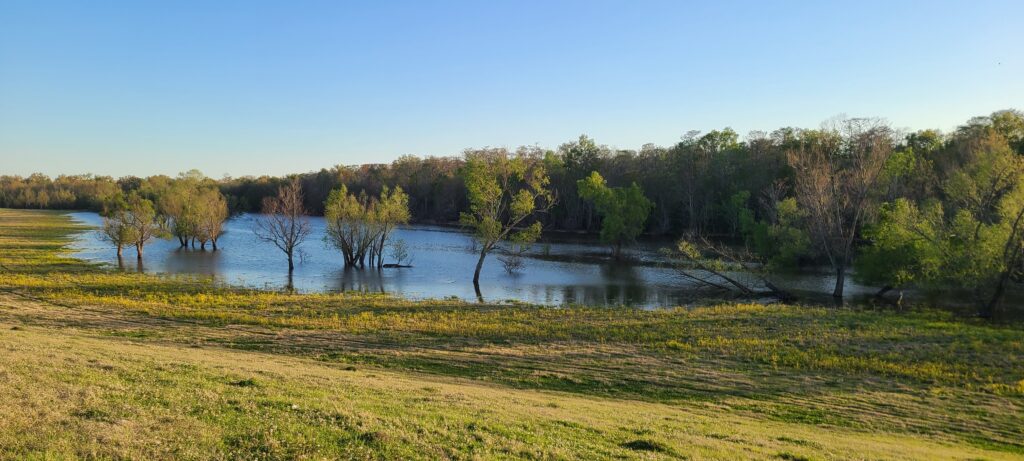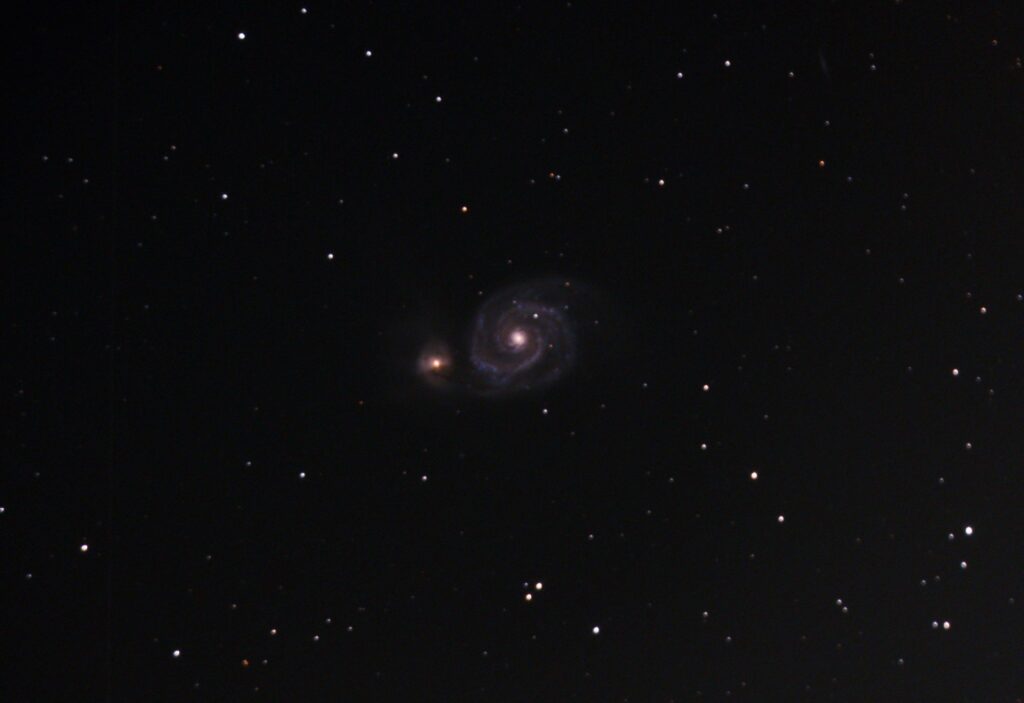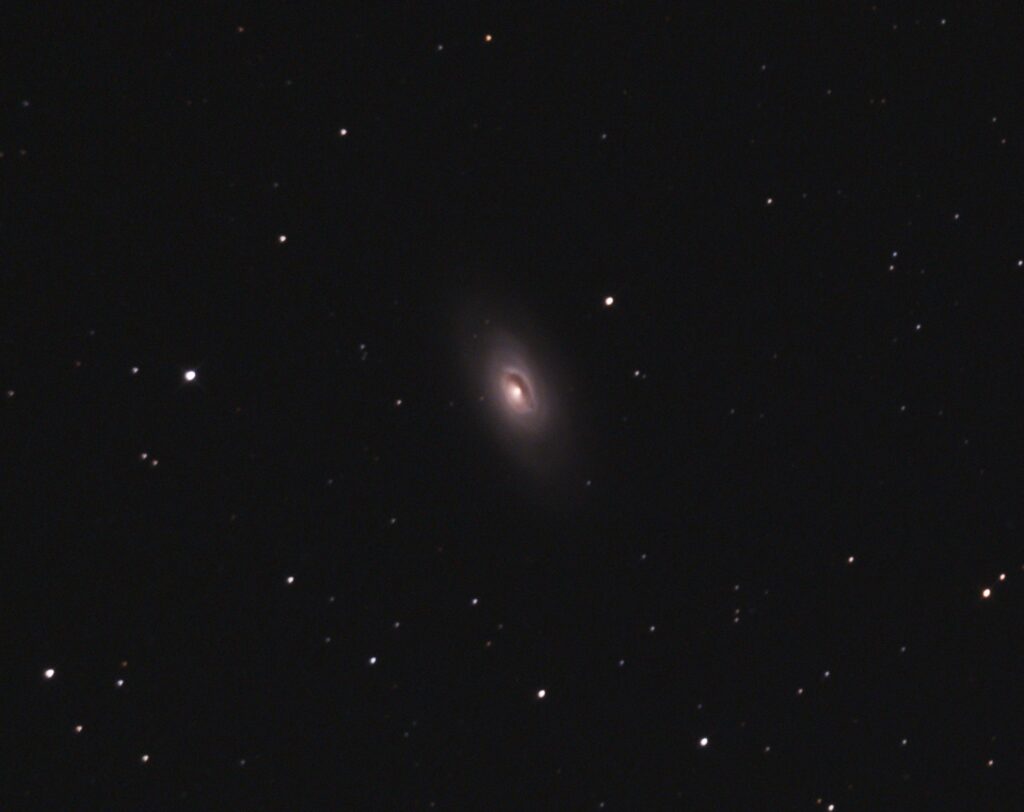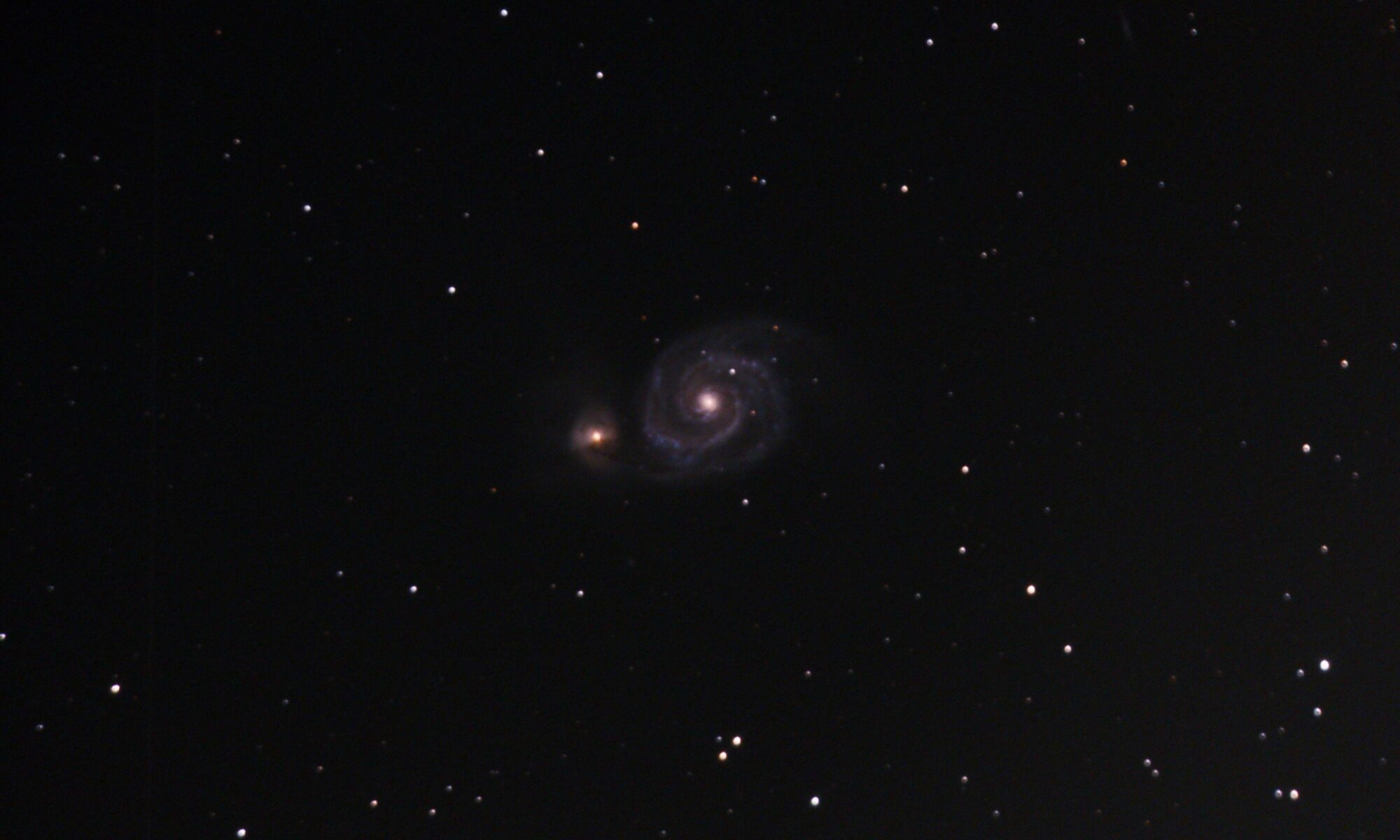It’s been really hot lately, so I haven’t felt like going out much to do more astrophotography or even any observing. I get enough of the heat during the day from running and gardening. However, I did make a couple of trips out to the dark site when weather conditions were favorable in the spring and earlier in the summer and was able to gather some data for Messier 51, The Whirlpool Galaxy, and Messier 64, The Black Eye Galaxy.
The spring trip to the dark site was the more pleasant one of the two, at least initially. The weather was cooler and conditions were decent and the bugs hadn’t come out in force, but it did get chilly toward the end of the night.

I set up my rig like usual and was determined to take another crack at the Whirlpool Galaxy. I had no problems aligning my rig and getting the focus sharp. The PHD2 was holding the scope on target. I was pretty excited to gather at least 2.5 hours of crisp images of this pair of galaxies.
But as the night progressed, I ran into problems. The first was one of the locals driving by in a pickup truck slowly and with their bright lights. With the angle of my scope, the light broke PHD2’s autoguiding. I noticed it fairly quickly though and was able to stop my camera and redo the autoguiding calibrations.
The next thing to happen was I didn’t notice when the external power supply for my laptop ran out of juice. Once it did, my laptop’s power scheme reverted to “battery mode” and powered down the system after 20 minutes. I caught this a little late, lost some images to streaking, but got everything going again.
The final thing to go wrong came with the dew. The humidity was pretty high and the dew settled hard and fast on the cooler metal of the scope. The lenses and mirrors appeared fine, but my focuser started slipping. I didn’t catch this for quite a while and lost even more data to all several images being completely out of focus.
I got to survey the damage the next morning and realized I lost about half of the data I hoped to gather. But the result wasn’t terrible and was definitely an improvement over my last attempt, even with the minimal amount of processing I did.

My next trip and my only summer trip to the dark site so far was more productive but less pleasant. I arrived earlier than I intended and waited in my car for the sun to set lower because the horseflies were swarming. I could hear them hitting my card like heavy rain drops. They thankfully went away as the temperature dropped and the sky got darker, but the mosquitos came next. The repellant I had was only so effective, so the best I could do was to keep moving and to keep spraying.
Setting up my rig went even smoother than last time and I was up and running pretty quickly. The only issue I ran into was one I should have thought of. My equipment is relatively old and I’m not using a software package that unifies tracking, autoguiding, and imaging, like the Astro Photography Tool (ATP). That’s definitely something I need to learn.
So, as my target for the night, The Black Eye Galaxy, slipped closer to the horizon, my mount went below its meridian and PHD2 either didn’t detect this or wasn’t set up to perform a meridian flip. In layman’s terms, the mount was turned too far to one side and needed to flip around to keep tracking the object.
I did see what was happening and was concerned my camera would eventually hit the tripod. I knew I’d have to stop everything and let the mount re-locate the object to get it to flip. And I did do all this without too many issues. Since I don’t use plating (again, learning ATP would have helped with this), I had to manually reframe the galaxy in my images to be as close as possible to what it was before I made the mount flip around. Of course, I didn’t find out until the next day that many of my images were ruined with the mount becoming unsteady on the object once it went too far past the meridian. I ended up with image after image of streaky, squiggly stars.
But there was some saving grace to this. I learned about the “Drizzle” feature in DeepSky Stacker, which “is a simple algorithm that creates an image that is larger than the images in the stack and interpolates between pixels to ensure it reproduces fine detail in edges despite the effects of stacking transformations.”
One of the astronomy society members that was out there with me told me about it but couldn’t recall what it was called. When I sat down to stack my images, I went through all of the settings in DeepSky Stacker to find whatever this feature was and I’m sorry I hadn’t been using it all along. It’s CPU intensive, but I have CPU power to spare.
Despite losing about half of my data, again, I got a decent result. And I’m almost curious enough to try re-stacking some of my earlier images with Drizzle x3 turned on.

Between my trips to the dark site, I also caught the lunar eclipse that occurred mid-May. Setting up my trusty 8″ Orion Dob in my own backyard with my phone’s camera and no computerized mounts or laptops, while listening to an audiobook, and sipping some bourbon is a lot more relaxing than hanging out on a levee with cows and bugs. If you look closely at this image, you may be able to see the little object heading toward the moon. It might have been a meteorite or a satellite. Whatever it was, it’s not an artifact in the image.



